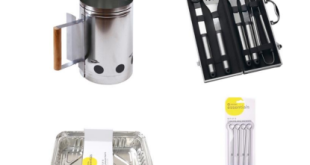 UK retail footfall in January was 1.3% down on a year ago – the steepest drop since the 2.8% fall in June 2016.
UK retail footfall in January was 1.3% down on a year ago – the steepest drop since the 2.8% fall in June 2016.
That’s the finding of the latest British Retail Consortium (BRC) -Springboard footfall and vacancies monitor, which covers the four weeks from January1 to January 28.
High Street footfall fell 0.8% in January on the year before, when it had risen by 0.2%. Footfall in retail park locations fell year-on-year for the third consecutive month. Footfall in shopping centres fell for the twelfth consecutive month.
BRC chief executive Helen Dickinson OBE said: “The relentless downward trend in footfall picked up pace again in January, as shopper numbers fell by 1.3% over the same period in the previous year, following a 0.2% decline in December.
“It was a fairly consistent picture across different retail locations; with the high street – which saw a modest bounce back the previous month – failing to draw in shoppers.
“January’s sluggish non-food sales, which undoubtedly corresponded with the dip in footfall below last year, go some way to explaining these underwhelming figures.
“Stores bore the brunt of the sales slowdown, posting their deepest three-month decline on record as online was the preferred shopping channel for the month’s clearance sales.”
Meanwhile, the national town centre vacancy rate was 9.4% in January, down from 9.5 % in October. This is the lowest rate since January 2016, when it stood at 8.7%.
Helen commented: “Our quarterly vacancy rate data shows shop vacancies virtually unchanged since October. On a regional level, London saw the strongest improvement, with the proportion of empty shops falling from 9.5 to 8.4% over the three months to January.
“However, in some parts of the country, the numbers of empty shops remains worryingly high and act merely as a blot on landscape of local communities.
“And while the overall the rate has tended to remain at around 9-10% since July 2015, the variation between successful and vulnerable locations grows ever wider.
“At a time when retail is being re-imagined as customers seek more engaging experiences in our high streets, town centres and retail park and centres, the incentive for retailers to innovate and invest in physical space is being curtailed by the upward only trajectory of business rates. This disincentive needs to be removed and the burden reduced – thereby encouraging, rather than deterring, investment to the benefit of those local communities most impacted.”
Diane Wehrle, marketing and insights director of Springboard, added: “The -1.3% drop in footfall across the UK’s bricks-and-mortar destinations in January may be a sign of tougher things to come.
“ Not only was it a noticeably larger drop than the -0.2% in December; but it was the steepest decline since June 2016, when footfall was impacted in the preceding weeks and in the immediate aftermath of the EU referendum.
“The results are consistent with longer term footfall trends, with an underperformance of shopping centres against high streets and retail parks.
“Of significance is that footfall is correlating closely with retail sales, with all sales results published so far showing a poorer performance in January 2017 than in January 2016.
“The UK vacancy rate improvement can be partly explained by the churn of occupancy from retail to hospitality (a feature of the last year) but it’s also due the fact that the vacancy rate reflects footfall and sales, and so lags behind these as a performance indicator. But it does demonstrate that retail destinations are adapting, with new occupiers offering a much-demanded all round customer experience.”
BRC chief executive Helen Dickinson OBE
 Housewares Business-to-business magazine for housewares retailers and their suppliers
Housewares Business-to-business magazine for housewares retailers and their suppliers



